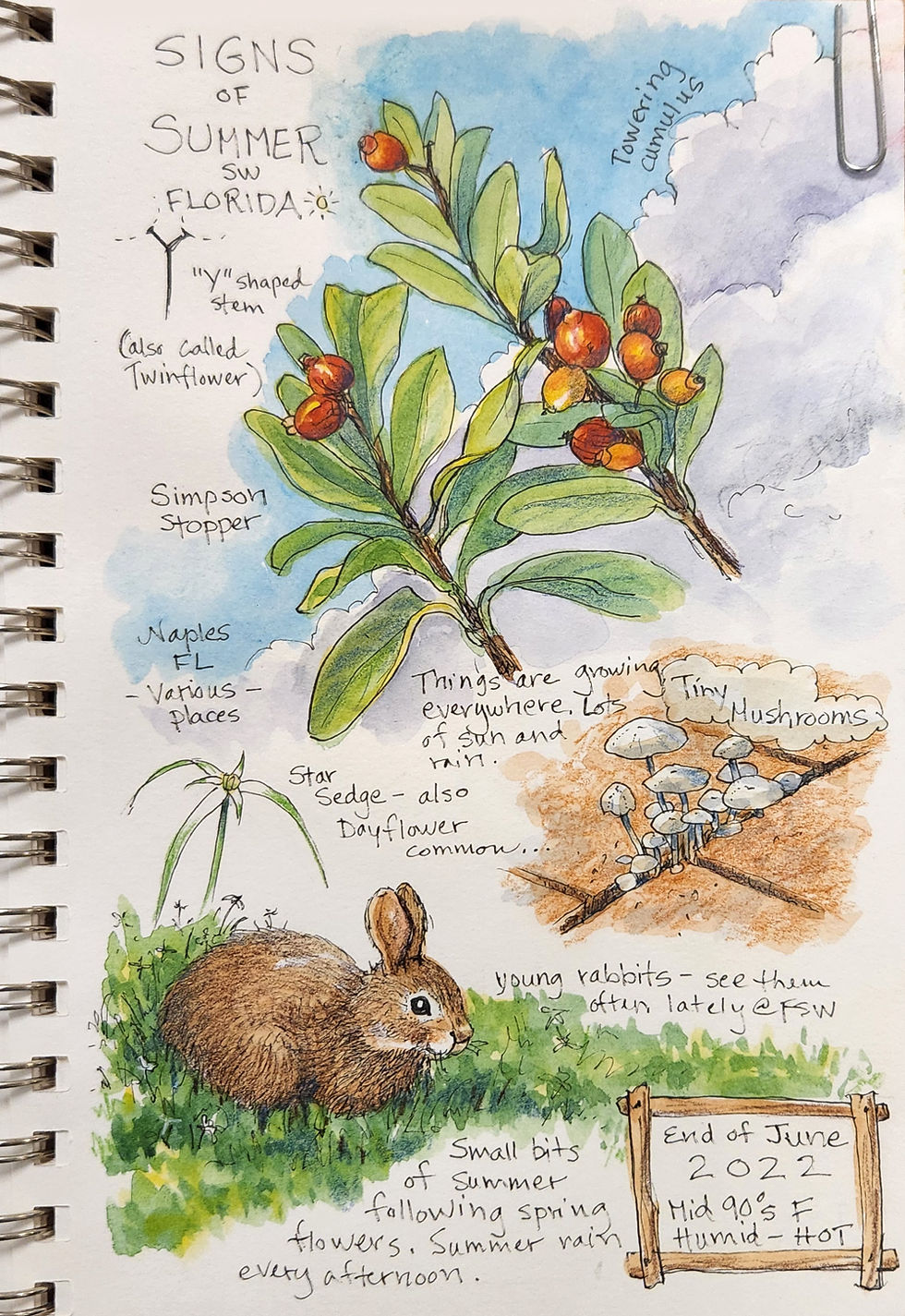Midsummer Florida
- lizardart4
- Jul 4, 2022
- 2 min read

Summertime in Southwest Florida has a rhythm of its own. It’s a pattern of heat and moisture and rain and cooling. It’s a time of luxuriant growth for the plants adapted to it. It’s also a time when I notice young lizards and birds and bunnies out and about, learning the ways of the world.
Our rainy season typically starts the first part of June, sometimes late May. The days are hot, spilling over with intense bright light as the clouds start forming. Smaller cotton-ball clouds gather and grow from the moisture that evaporates and rises from the warming land and earth-bound waters. Boundless clear blue skies start filling up with towering cumulus clouds, sometimes building many miles upwards.
The clouds roll in from the Everglades, sunlit white, gathering colors of violet, blue, and dark gray along the bottoms and up through the centers. The air feels a bit cooler when the clouds hide the sun, but it’s still quite humid. When water saturation reaches a critical point, the rain starts, typically late afternoon. The other night we had torrential rain off and on for hours – along with booming thunder and sporadic lightning. Abundant water recharges our underground aquifers, and brings on an explosion of plant growth.

The flowers of spring are turning into fruits now – nearby I see Simpson stopper ripening, seagrape (still green), cocoplum and more. June flowers are blooming of course: a casual suburban observer might see common natives like Spanish needles, beach sunflower, and duck potato easily. These are just a few volunteers in the space I move within every day, the ones I happen to stop and notice. I also see the birds and their nests, an occasional small black snake, and young Eastern cottontails (one every day!), and other signs of procreation and growth.
This is our lazy summer rhythm, the days hot and humid, then the clouds and rain, cooler but wet. Nothing drenches and soaks to the bone like a Florida summer rain. We’ve just passed the Summer Solstice and the days still feel long, although they are starting to shorten. Our rainy season continues through the lingering months of July, August and September, and by mid-October I imagine a massive collective sigh of relief among residents. We may still have the potential for tropical storms and hurricanes until the end of November, but at least we’ll be more comfortable.
No matter what's going on in the human world, the natural world keeps marking time, finding its own rhythms, confirming new life. These are the drumbeats that feed my soul and the music that helps me make sense of life.

Media: Mechanical pencil .7mm Micron Pigma 01, black Aquabee Super Deluxe Mixed Media sketchbook Daniel Smith watercolors, Botanical Floral half-pan set Niji waterbush, round M







Comments